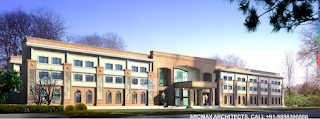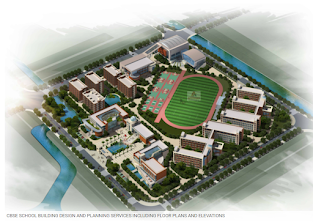Creating Healing Environments: The Art of Hospital Design Layout
Hospital design is a complex and critical aspect of healthcare
architecture. A well-planned hospital design layout can significantly impact
patient outcomes, staff efficiency, and the overall experience of all
stakeholders. In this guide, we'll explore the essential elements of hospital
design layout, highlighting the factors that contribute to a healing
environment.
Patient-Centered Design:
1. Privacy and Comfort: Patient rooms should prioritize privacy
and provide a comfortable, calming atmosphere. Considerations such as noise
control, natural light, and comfortable furnishings are vital.
2. Infection Control: Hospital
design layout must prevent the spread of infections. This involves careful
layout planning, including isolation rooms and proper ventilation systems.
3. Wayfinding: A clear and intuitive layout helps patients and
visitors navigate the hospital easily. Signage, color-coding, and a logical
floor plan all play a role.
4. Accessibility: Hospitals must be accessible to all patients,
including those with mobility challenges. This means well-planned ramps,
elevators, and wide corridors.
Efficient Staff Workspaces:
1. Nurse Stations: Strategic placement of nurse stations allows
for visibility and quick access to patient rooms. Ergonomic design is essential
for staff well-being.
2. Operating Rooms: The layout of operating rooms must support
the complex needs of surgical teams. Proper positioning of equipment and clear
sightlines are critical.
3. Supply Management: Central supply areas should be
well-organized and strategically located to reduce staff travel time and
enhance efficiency.
Safety and Security:
1. Emergency Department: The design of the emergency department
should facilitate rapid patient assessment, triage, and treatment, with easy
access to diagnostic imaging and surgical suites.
2. Security Measures: Hospital layouts should incorporate
security features to ensure the safety of patients, staff, and visitors. This
may include controlled access points and surveillance systems.
Support Services:
1. Diagnostic Imaging: Radiology and imaging departments should
be centrally located for quick access from various areas of the hospital.
2. Pharmacy: Pharmacy layouts must support medication safety and
efficient distribution to different departments.
3. Food Services: Hospitals should have well-organized kitchens
and dining areas to provide nutritious meals to patients, staff, and visitors.
Sustainability and Technology:
1. Environmental Design: Modern hospital layouts increasingly
prioritize sustainable features, such as energy-efficient lighting, waste
reduction, and green spaces.
2. Digital Integration: Hospitals must accommodate advanced
technology, from electronic health records to telemedicine, requiring careful
planning for IT infrastructure.
Flexibility for Future Growth:
Hospitals need to plan for future expansion or adaptation. This
requires designing spaces that can easily accommodate new technologies and
healthcare practices.
Conclusion:
Hospital design layout is a multifaceted field that considers
the needs of patients, staff, and the broader healthcare community. A
well-planned hospital design layout can improve patient outcomes, streamline
workflows, enhance safety, and provide a healing environment. As healthcare
continues to evolve, hospital designs must adapt to meet the changing needs of
patients and healthcare providers, all while maintaining a focus on
patient-centered care and well-being.
For more info. visit us:




Comments
Post a Comment